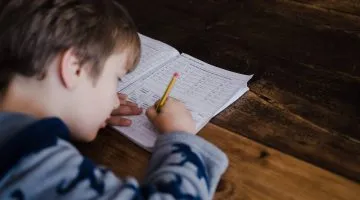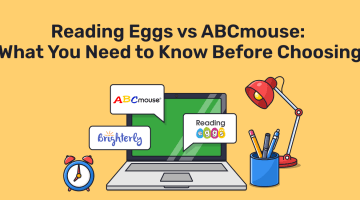The Reasons Why Your Child Needs a Positive Learning Environment to Study Well
Updated on February 5, 2024
Have you tried different things to improve your students’ studies but have had little success? The reason is not always you, the subject, or the teaching process; sometimes, it is something as unexpected as the space kids are learning in. Teachers must consider changing their habits and approaches since kids need a positive learning environment.
What Is A Positive Learning Environment?
A positive learning environment is more than an element in a classroom; it is a place where children are encouraged to learn from the teachers and each other. In order to improve the quality of their learning, a child must be able to share ideas with peers in the class without the fear of intimidation.
Kids must know that they can question every answer they get from solving a problem and learn by seeing things from the perspective of other students. In a positive learning environment, the teaching process is participatory in that teachers carry the students along instead of making them listen, accept, and regurgitate what they have learned.
The Difference Between A Positive Classroom Environment And A Hostile Learning Environment
One of the characteristics of a positive learning environment is that it completely changes how students apply the ideas they have learned. If your children simply reiterate everything they have learned from you instead of assimilating the concepts in ways they understand better, their learning environment isn’t the best.
A hostile learning environment stifles creativity and promotes strict conformity, while a positive atmosphere inspires trust, making children feel supported and showing them that failure is not necessarily bad. Children fear discussing ideas, solutions, and creative approaches in a hostile learning environment.
Why Is A Positive Classroom Environment Important?
You may wonder why you must care about creating a positive learning environment for a child rather than just teaching them. The answer is you are responsible for the children you teach mental, academic, and emotional development. The metric for measuring your success as a teacher starts with your student’s test scores and ends at the level of their emotional well-being.
To provide the best learning experience for your students, you must create a suitable environment. Here are a few reasons why positive learning environment is important:
One of the importance of learning environment for students is that it helps a child learn. A child learns to question everything around them in the proper environment, thus developing critical thinking. In this atmosphere, they learn to build conversations around concepts they have learned in class. The confidence kids build makes it easier to understand formulas and ideas.
Again, one of the benefits of positive learning environment is that you grow as a teacher when the children under your guidance are progressing. Your reputation soars as your students get through difficulties and make better grades. Sometimes, there is no reason to rebuild your portfolio after each job if your success speaks for you.
Math & Reading Camp
Join us to help your kid achieve
their full math and reading potential!
 Apply now
Apply now
Strategies For Creating A Positive Learning Environment In A Classroom
Creating a positive learning environment requires more than improving everyday interactions with students. You may need to overhaul existing processes to transform the learning environment.
But before making changes, you must realize that each child is unique, so you may need to apply individual approaches to improve their experience. Here are strategies detailing how to create a positive learning environment.
Address The Needs Of Your Students
Your job as a teacher continues beyond just teaching the subject you were paid to teach. Each student in your class has emotional and mental needs that someone should address. Removing yourself from this equation will leave your students believing you do not care about their well-being.
Students come to class expecting you to address their needs and would be happy if you paid enough attention to them. It takes a village to raise a child. So, don’t think the onus of helping your students grow rests only with parents.
Treat each child personally, find out their needs, and endeavor to meet them to the best of your ability. Reach out to someone who can address those needs you cannot handle. The bottom line is that your students should never think that you don’t care about them.
Create A Sense Of Order
While children love the freedom to be themselves without restraint, they still need to work under your guidance. Kids may not love you for it initially, but they will learn to appreciate the order you create as time passes. An easy way to develop a sense of order is to list expectations from your students by creating a workable routine.
For example, once you come into the class after niceties, your first task should be to find out about assignments they may have missed. Demand an explanation for each homework a student misses and put structures in place to ensure the situation does not reoccur. Your interest in their academic success will make students ask about their missed lessons.
Creating a well-oiled routine teaches children to follow the same behavior, which is the same as creating an appropriate learning environment. When they come to class, they know what to expect based on your created pattern. You can also engage students in a learning activity every morning so that it becomes second nature to them.
Invent A Unique Greeting Method
You may not know this, but greeting your kids creates a positive learning environment. Greetings go beyond coming into the class and saying, ‘Good morning, kids.’ Instead, walk into class, call each child by name, and greet them by fist-bumping, high-fiving, or hugging them.
While welcoming them, you can chat with students who seemed out of sorts the previous day. Alternatively, you can stand at the door and repeat welcoming, encouraging words as kids walk into class. Starting the day with positive moments would make kids want to attend class every day.
You do not necessarily have to become a favorite teacher from the first day because that takes time. However, you can be a teacher who makes their kids come to school looking forward to classes every day. If you were mad at a child for being a pain the previous day, greeting that child the next day reminds them that every day is new.
Show kids A Bit Of Yourself
Sometimes, students know teachers as just teachers, which should be fixed. We do not suggest you do a tell-all series about yourself to your students, but let them see you as more than a teacher. Have a day when you tell them your favorite color, food, or movie.
If you teach Pre-K children, you can show them pictures of you when you were young. Children need to understand that you are human like them, just a lot bigger. If you plan to counsel kids, you must share relatable stories from when you were their age or in their current shoes.
Let students know you like waffles, gummy bears, and ice cream. Making kids feel understood is essential to their emotional and mental well-being. At the same time, your students must know your values and principles. Teaching kids your values will encourage them to create theirs.
Be Generous With Praise
When a child succeeds at a task, academically or behaviorally, it is essential to let them know how you feel about that win. Sometimes, what a child may have achieved could be as simple as getting through a class without disrupting or yelling. As a teacher, you know how relieving it was for you to have not turned into a crisis control expert for that child, so let a kid know that as well.
Rewarding good behavior enforces that action. The effects of praising people are evident in children. Instead of only expressing displeasure when your students do something wrong, praise their good deeds.
It would help to use creative approaches to express your pleasure instead of limiting your system to positive words. When a child hits an educational goal, roll out the sirens and praise them. Let them know they did well by rewarding them.
Teach Children To See Failure As A Learning Tool
Children will encounter failures and losses as they grow, but they mustn’t see them as terrible. Sometimes, teachers drive children towards sadness when they fail because of their reaction to the failure. It is wrong to make a child feel like a failure because they flunked a task.
Instead of letting kids wallow in self-doubt, teach your students the place of failure in every success story. Let them see every test as a chance to learn something new, irrespective of grades. You can also discourage classroom bullying and segregation that may develop between the students who typically get higher scores and those who don’t.
Children need to be confident in their losses and successes, and it is your duty as the teacher to ensure this. When students do not get things right, have them walk you through their thought processes and see all the points where they may have faltered. Correct the wrongs that led them to that failure, ensuring they learn from the mistake.
Encourage Learning Through Games And Hands-on Activities
Many adults cannot stand math today because they struggle with some teaching methods as kids. These days, more children like math because of the availability of games and activities that interest and keep kids glued to math concepts. Games and exercises are perfect for bonding and ensuring your kids learn what you teach them.
You can also use technology to boost your students’ love for learning. These days, you can get tablets designed for kids. They contain video lessons, puzzles, and apps that make learning more enjoyable, so introduce suitable digital tools to your kids.
The students in your class should know more than basic things about each other. If your classroom is that space where students come to learn only and then go home, kids won’t have wholesome relationships with each other. With games in the mix, children can bond better and grow friendships that will last long and make them look forward to attending class.
Math & Reading Camp
Join us to help your kid achieve
their full math and reading potential!
 Apply now
Apply now
Limit The Prevalence Of Cliques
You cannot do much to stop your students from forming cliques in the classroom because some kids will bond better, but you need to limit the prevalence of such groups. Children can be mean to kids they do not like, especially when they have peer support. Find ways to make every child in the class form a relationship with others so that nobody ends up isolated.
Your job is to ensure that none of your students dread coming to school because they do not belong to any cliques. An excellent strategy is creating exercises that encourage students to work together to succeed. Always use random selection methods when pairing students for those activities.
A classroom where many children are lost is a very negative learning environment. Thus, please pay attention to how they maneuver in the cafeteria, talk with each other on lunch breaks, and huddle against one another during free periods. From watching them, you can tell who is in the clique and who is on the outside.
Don’t Openly Criticize Your Students
Teachers should know that they must not criticize their students openly. But we are human beings; sometimes, our prejudices against individuals can still break through. Take this story as a lesson: never to prejudge your children.
If you can’t explain what bothers you about another person acting this way, who cares how they make you feel? The so-called admonitions and ‘correcting students’ errors’ are accepted, but it is more important to learn to express your thinking even when rebuking somebody.
Just remember that you’re dealing with kids, and stamp out any prejudices before they happen. One is a negative learning environment if it makes the child feel judged. Therefore, try and correct children’s errors without making fun of them.
Encourage Interactions
Practice inter-student interactions; don’t just use the class as an opportunity to teach a lesson. They must be able to talk with their classmates about what they have learned in or out of the classroom, whether they are there or not. Their interactions with peers broaden their ability to view things from the perspective of others.
One of these positive learning environment examples is to encourage students to cooperate in group assignments and projects. I hope students stand before classmates and introduce their technique while their peers ask probing questions.
If you build a culture of understanding, the interaction between children will make things easier for you. You have to host students in round-table-style discussions to push these interactions to the point where kids hold them in your absence.
Establish Clear Expectations
Establishing high but realistic standards is the key to cultivating a good learning environment. Set behavioral expectations and educational objectives, so students know what’s required of them. Such clarity gives form to a focused and effective classroom.
These expectations should be rechecked occasionally, and students should be given little reminders. When students understand what is required, they will feel a sense of structure and direction; this naturally creates a good learning atmosphere.
Encourage Collaboration
This collaborative learning experience is essential in establishing a good classroom climate. Plan activities that will encourage students to work together and learn how to solve problems collectively. This not only develops social skills but also makes the classroom into a supportive community.
Stress the need for everyone to respect each other’s input and take all opinions seriously. Students can learn more from each other through cooperation, creating a spirit of mutual success.
Create a Comfortable Physical Space
The classroom’s physical design is essential in creating a supportive learning environment. Organize the desks and seating in a way that encourages interaction. Be sure the classroom is in order, without extra material to distract from studying.
Small touches such as comfortable seating, colorful displays, and natural lighting can make a difference. These demonstrate how a properly planned physical environment can influence students’ attitudes toward learning, making the classroom feel like home.
Implement Varied Teaching Methods
There are many types of kids, so different teaching methods should be used. Use various teaching methods, including visuals, for example, class participation and the use of technology.
It appeals to students’ various methods of taking in and retaining information. Offering a range of learning activities allows you to attract the interest of an even broader spectrum, maintaining their class participation on an active and exciting level. Acknowledging and accommodating diverse learning styles is part of the healthy creation environment.
Celebrate Achievements
Citing academic and personal successes can help maintain a good learning environment. Recognize accomplishments, individual or collective, for example, learning a problematic subject matter well, completing something you are working on, or behaving correctly. Forms of celebration may be oral praise, certificates, or a call out to everyone in the class.
Highlighting achievements helps students feel good about themselves and makes the whole school emphasize effort and reward. This negative reinforcement keeps the students motivated and interested, helping to build a feeling of pride in their work.
Encourage Curiosity
However, stimulating curiosity is essential in establishing a culture that seeks learning for its own sake. But questions, exploration, and critical thinking are encouraged. Cultivate an environment where students are encouraged to be curious and feel no inhibition about indulging their curiosity.
Incorporate activities through which students can delve deeply into and become genuinely interested in a subject. Cultivating curiosity develops a love of lifelong learning and fosters an environment that encourages students to seek knowledge.
Provide Opportunities For Autonomy
A sense of ownership over their education increases students’ motivation to learn. Include activities that offer independent projects, self-directed research, or flexible assignments—letting students do as they please gives them a sense of responsibility in learning.
This autonomy stimulates students’ imagination and gives them practice in making decisions and managing time. Through this balance of directed education and independent study, you help maintain a good class atmosphere based on students gaining control over themselves.
Adapt To Individual Needs
Understanding how to meet students’ needs is essential for creating a positive learning environment in the classroom. Adapt to learner paces, styles, and abilities by differentiating instruction. This could mean supplementing classes for challenging students, setting enriched courses for the more advanced, or using various learning materials to meet different needs.
Recognizing and responding to individual needs can promote an inclusive environment where pupils feel cared for, accepted, and esteemed.
Involve Parents And Guardians
Close communication with parents and guardians is another way of providing a comprehensive support system for the students. Inform parents of everything in the classroom, school performance, and concerns. Take advantage of conferences, meetings, or voluntary activities to invite parents’ involvement.
Work with parents to overcome difficulties and build on successes, affirming each student’s role as a partner in their education. If parents are proactive participants, it further consolidates the parent-teacher relationship between home and school as part of a more complete learning environment.
Integrate Technology Thoughtfully
If teachers use technology effectively, bringing it into the classroom will only help. Pick the right and appropriate interactive digital tools to meet your instructional intentions. Technology makes teaching more varied, offers interactive learning environments, and fosters the ability to work together.
Introduce digital citizenship to encourage the responsible use of technology. Planned use of technology can create a positive, lively learning environment that prepares the student for the age of digital information.
Encourage Questioning
Teachers are sometimes wrong, and students should have the right to question you.
- ‘Why is this happening?’
- ‘Why did you choose this?’
- ‘Why do I have to sit here?’
- ‘What will happen if I do this?’
These are questions that you must be open to answering as a teacher.
Also, note that ‘Because I say so’ or ‘Because I want it’ is not a valid answer to your students’ questions. Your answers must be logical and open to further questioning if needed. We must encourage critical thinking in our children.
Don’t Focus On Reward-based Learning
If you raise kids using a reward-based system, they may expect a gift every time they do something noteworthy. Unfortunately, the world doesn’t work that way. If students believe they will get a gift for every milestone, they will be disappointed. So, while rewarding your students, ensure you don’t overdo it.
Encourage Vulnerability With You As An Example
Kids should learn that vulnerability is okay, but you must show them how. They watch you and learn from you, so you need to open up before asking them to do the same and share their feelings. Being distant while expecting children to feel safe around you is counterproductive.
Conclusion
A positive classroom learning environment is a way to ensure that your kids thrive academically and socially. Such a learning environment has little to do with aesthetics and more with student management. It is your job as a teacher to ensure that your kids learn in an environment that teaches them new things and, more importantly, enhances their gifts and talents. So, use the tips in this article to improve your students’ learning environment.











![Miacademy Reviews: Is It Worth It? [2025]](https://brighterly.com/wp-content/webp-express/webp-images/doc-root/wp-content/uploads/2025/08/Miacademy-reviews_-Is-It-Worth-It-e1754287141491-360x200.png.webp)
